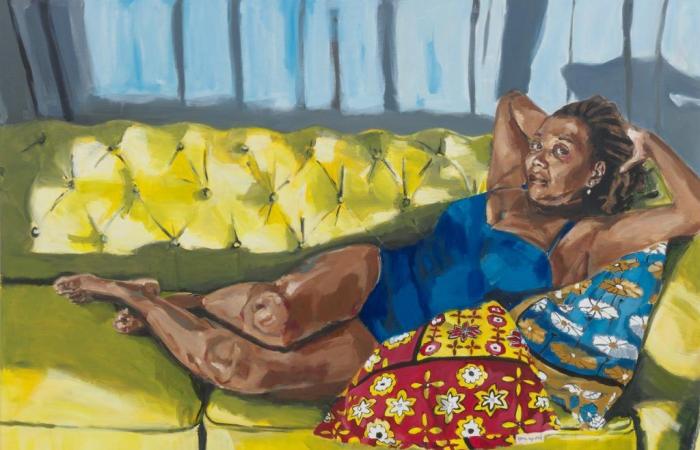At the Kunstmuseum Basel, until October 27, 2024, “When We See Us – A Century of Pan-African Figurative Painting” is being held. A monumental exhibition that reveals how black artists have painted all the richness of their identity for more than a century.
The “When We See Us” exhibition brings together an impressive quantity of paintings: 150 pan-African works of art created by 120 artists from Africa and its vast diaspora. Figurative paintings, because all represent black people. Portraits that dialogue with each other to take visitors to the Kunstmuseum Basel well beyond the straitjacket in which history has confined our representations of African culture.
The initial question posed by the exhibition is: how have African and African artists from the African diaspora depicted their experiences in their painting over the last hundred years? For Koyo Kouoh, co-curator of this hanging, the initial idea was really to show cheerfulness, the daily underlines in the 7:30 p.m. of May 30: “It was a question of concentrating on works allowing decentering ourselves from violence and trauma, because that cannot be the only canvas for reading and engaging with the African and Afro-diasporic experience around the world.”
External content
This external content cannot be displayed because it may collect personal data. To view this content you must authorize the category Social networks.
Accept More information
A kaleidoscope of pan-African painting
The title of the exhibition “When We See Us” refers to the Netflix miniseries “When They See Us” (2019) by African-American director Ava DuVernay, inspired by the case of the Central Park Jogger, in which African-American teenagers were victims of a miscarriage of justice due to racist prejudice.
The exhibition proposes to reverse the perspective by replacing “They” with “We”. Thus, it is the artists who show in their works the way in which they perceive their own condition. “I am convinced that the life of the black body in the world and the way in which Africa or the descendants, the African diaspora, inhabit the world is important for the very reading of the future of the world”, indicates Koyo Kouoh.
The paintings are all grouped under a general theme, “Black Joy”, then broken down into six themes: everyday life, joy and joy, rest, sensuality, spirituality and triumph and emancipation.
“When We See Us” has already been presented in Cape Town, South Africa, at the Zeitz Mocaa, the largest museum of contemporary African art of which Koyo Kouoh is the director. The exhibition breaks free from codes and highlights the freedom to tell stories and contemplate oneself through one’s Africanness. An immersion as exhilarating as it is disconcerting.
Comments collected by Gilles de Diesbach and Michel Ndeze
Web adaptation: ld
“When We See Us – A century of pan-African figurative painting”, Kunstmuseum Basel, from May 25 to October 27, 2024.






